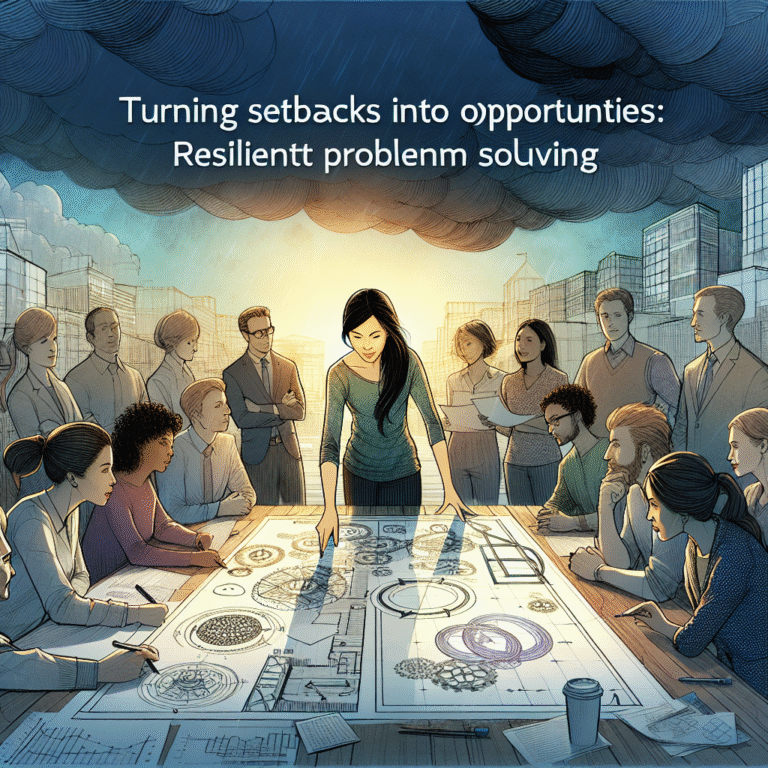
Introduction
In today’s fast-paced educational landscape, the call to foster empowerment among students has never been more imperative. "Empowering Students: Integrating Explicit Learning in the Classroom" is not just a phrase; it encapsulates a transformative approach crucial for cultivating self-directed, resilient learners. As education continues to evolve, the need for strategies that not only convey knowledge but also inspire critical thinking, creativity, and emotional intelligence is paramount.
Imagine a classroom where students not only absorb information but actively engage in their learning journey, equipped with the tools to think critically and act purposefully. This article delves into the multifaceted realm of explicit learning, illustrating how integrating this powerful method can revolutionize education. Through rich insights, relevant case studies, and actionable strategies, we will explore ways to invigorate traditional pedagogies and make learning a vibrant, collaborative experience.
The Foundation of Explicit Learning
Understanding Explicit Learning
Explicit learning is characterized by direct instruction, where objectives are clearly defined and knowledge is presented in a straightforward manner. This contrasts with implicit learning, where students acquire skills indirectly through experience. When we focus on "Empowering Students: Integrating Explicit Learning in the Classroom," we prioritize clarity and structure, essential for guiding students in their educational pursuits.
Benefits of Explicit Learning
- Clarity of Expectations: Students understand what is expected of them, reducing anxiety and fostering confidence.
- Targeted Skill Development: Explicit instruction allows for the cultivation of specific skills essential for academic and personal success.
- Enhanced Engagement: When students recognize the relevance of what they are learning, their motivation increases, leading to better retention and understanding.
Case Study: A Successful Implementation in Middle School
At Lincoln Middle School, a team of educators revamped their English curriculum by integrating explicit learning techniques. By outlining clear objectives for each lesson and providing structured frameworks for assignments, teachers observed a significant increase in student engagement. Students who previously struggled with reading comprehension began to flourish, demonstrating notable improvement in both assessments and class discussions.
Analysis
This case underscores the power of explicit learning strategies. By providing clear structures and expectations, teachers empowered their students to take ownership of their learning, breaking down barriers that hindered their confidence.
Strategies for Integrating Explicit Learning
1. Define Clear Learning Objectives
One of the most essential components of "Empowering Students: Integrating Explicit Learning in the Classroom" is defining clear learning objectives. When students understand the goals of their lessons, they can better navigate their learning paths.
Tips:
- Use specific, measurable objectives.
- Communicate these objectives at the start of each lesson.
- Revisit objectives at the end to assess understanding.
2. Employ Direct Instruction Techniques
Direct instruction provides a framework for presenting information. Techniques such as modeling and guided practice can help clarify complex concepts.
Example Techniques:
- Modeling: Demonstrating problem-solving methods.
- Think-Alouds: Sharing thoughts during problem-solving tasks helps students verbalize and understand processes.
3. Foster Collaboration
Integrating group work and collaborative projects can significantly enhance the learning experience. Students learn from each other, fostering a deeper understanding of the material.
Tables of Effective Group Collaborations
| Collaboration Format | Description | Benefits |
|---|---|---|
| Think-Pair-Share | Students think on their own, then discuss with a partner. | Boosts confidence and communication skills. |
| Jigsaw | Each student learns a section and teaches it to peers. | Increases accountability and engagement. |
4. Utilize Assessment as a Learning Tool
Regular assessments should be used as learning tools rather than simply evaluative measures. Formative assessments can provide valuable feedback to guide both teaching and learning.
Types of Assessments:
- Quizzes: Short, frequent checks for understanding.
- Peer Reviews: Encourages critical thinking and constructive feedback.
Case Study: Assessment for Learning at Davis High School
At Davis High School, teachers incorporated formative assessments into their practice, transforming the traditional grading model. Instead of emphasizing final evaluations, emphasis was placed on ongoing feedback that helped students identify their strengths and areas for improvement. The results were striking: students reported feeling more motivated to improve.
Analysis
This case illustrates how effective assessments can empower students by clarifying where they stand in their learning journeys. By viewing assessments as tools for growth rather than judgment, students became more engaged and proactive in their education.
Overcoming Challenges to Integration
Common Obstacles
While integrating explicit learning can yield remarkable benefits, challenges often arise:
- Resistance to Change: Teachers may be accustomed to traditional methods and hesitant to adopt new strategies.
- Resource Limitations: Some classrooms may lack the necessary materials or technology to integrate explicit learning effectively.
- Time Constraints: Busy curricula can limit the time available for implementing explicit learning techniques.
Strategies to Address Challenges
- Professional Development: Continuous training for educators ensures they are equipped to implement new teaching strategies confidently.
- Resource Collaboration: Sharing materials and ideas among teachers can enhance resourcefulness in the classroom.
- Flexible Curriculum Design: Allowing for adaptability in curricula can help accommodate explicit learning activities.
The Role of Technology in Explicit Learning
Leveraging Digital Tools
The advent of technology presents exciting opportunities for enhancing explicit learning. From interactive software to online resources, technology can make learning more dynamic and accessible.
Suggested Tools:
- Google Classroom: Facilitates clear communication of objectives and collaborative projects.
- Kahoot!: Interactive quizzes make assessments engaging and fun.
Case Study: Technology-Enhanced Learning at Riverside School
Riverside School integrated technology into their curriculum, using tools like Google Classroom for clear communication and assessment. Students showed increased engagement and performance, especially in subjects like math and science, where interactive simulations and visual aids brought concepts to life.
Analysis
Technology is an invaluable ally in "Empowering Students: Integrating Explicit Learning in the Classroom." With the right tools, educators can create engaging, interactive environments that cater to diverse learning styles, enabling all students to succeed.
Building a Culture of Empowerment
Shifting Mindsets
Empowering students through explicit learning extends beyond content mastery; it requires fostering a mindset of growth and resilience.
Strategies to Cultivate Empowerment
- Encourage Self-Reflection: Have students assess their progress and set personal goals.
- Celebrate Progress: Acknowledge not just achievements but also efforts and improvements to foster an appreciation for the learning process.
Case Study: Growth Mindset Initiative at Northview Secondary School
At Northview Secondary School, an initiative to promote a growth mindset led to remarkable improvements in student performance. Educators integrated explicit learning methods alongside growth mindset principles, leading to increased academic confidence and willingness to engage in challenging work.
Analysis
The integration of growth mindset principles in explicit learning not only promotes academic success but also prepares students for the challenges of the future, equipping them to face obstacles with resilience and creativity.
Conclusion
Empowering students through explicit learning is a compelling approach that transcends traditional educational boundaries. By integrating clear objectives, collaborative activities, and technological resources, we enable students to thrive in an ever-changing world. As educators, our role is not just to impart knowledge but to inspire and motivate our students to become lifelong learners.
Actionable Takeaway
To successfully implement explicit learning, start small. Define clear learning objectives for your next lesson, incorporate direct instruction techniques, and engage students in collaborative activities. Embrace technology where applicable, and encourage a culture of reflection and growth. Together, we can cultivate an educational environment that empowers every student to reach their fullest potential.
FAQs
1. What is explicit learning?
Explicit learning refers to direct instruction where learning objectives are clearly defined, making it easier for students to understand what is expected of them.
2. How can I assess student understanding?
Using formative assessments like quizzes, peer reviews, and class discussions can provide ongoing feedback to gauge student understanding effectively.
3. What role does technology play in explicit learning?
Technology can enhance explicit learning by providing interactive tools and resources that make learning engaging and accessible.
4. How can I encourage student engagement?
Incorporating collaborative projects, varied instructional strategies, and relevant assessments can significantly enhance student engagement.
5. What if my students resist explicit learning methods?
Start by implementing small changes and seek feedback from students about their learning preferences. Building trust and demonstrating the benefits of explicit learning can help ease the transition.
By focusing on the principles and practices outlined in this article, educators can truly embrace "Empowering Students: Integrating Explicit Learning in the Classroom," setting the stage for transformative learning experiences that empower and inspire students for life.














